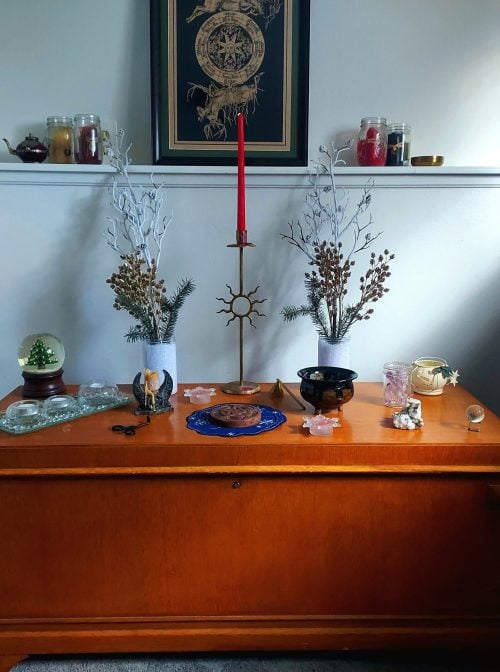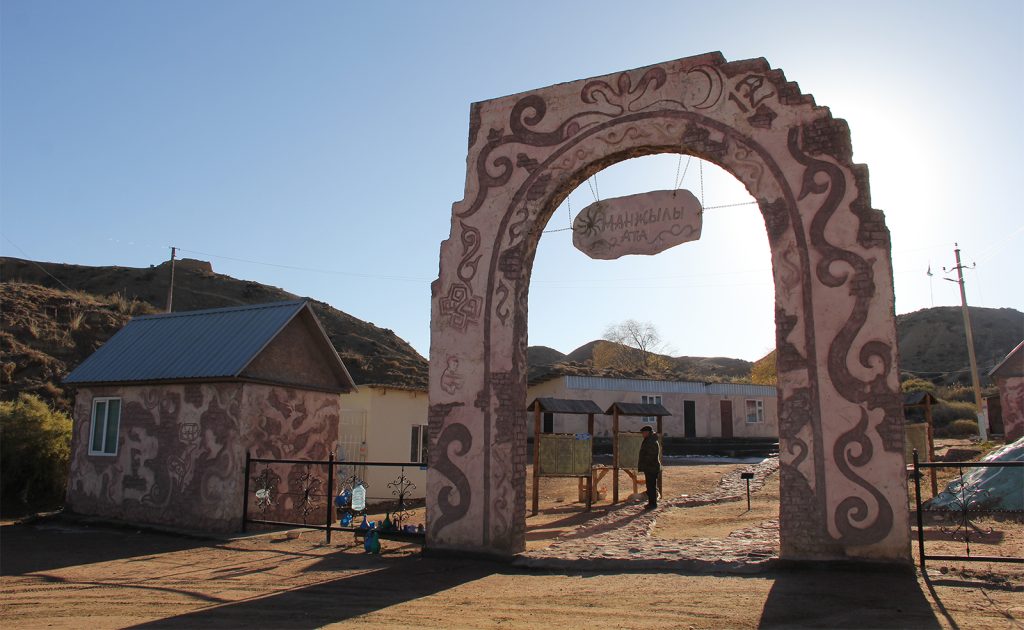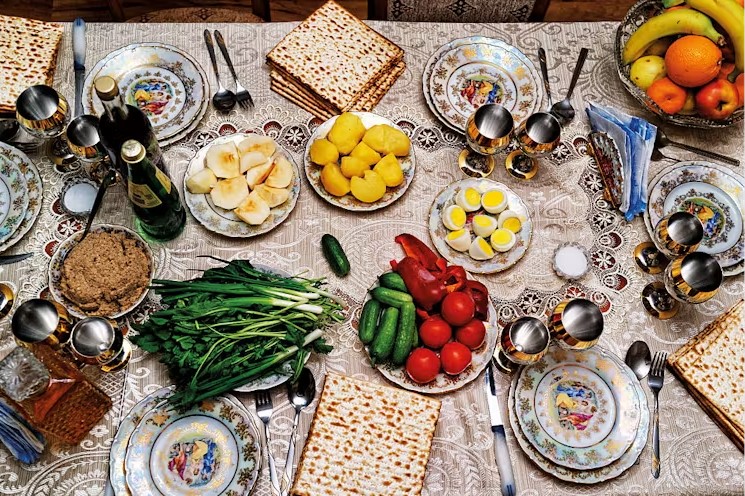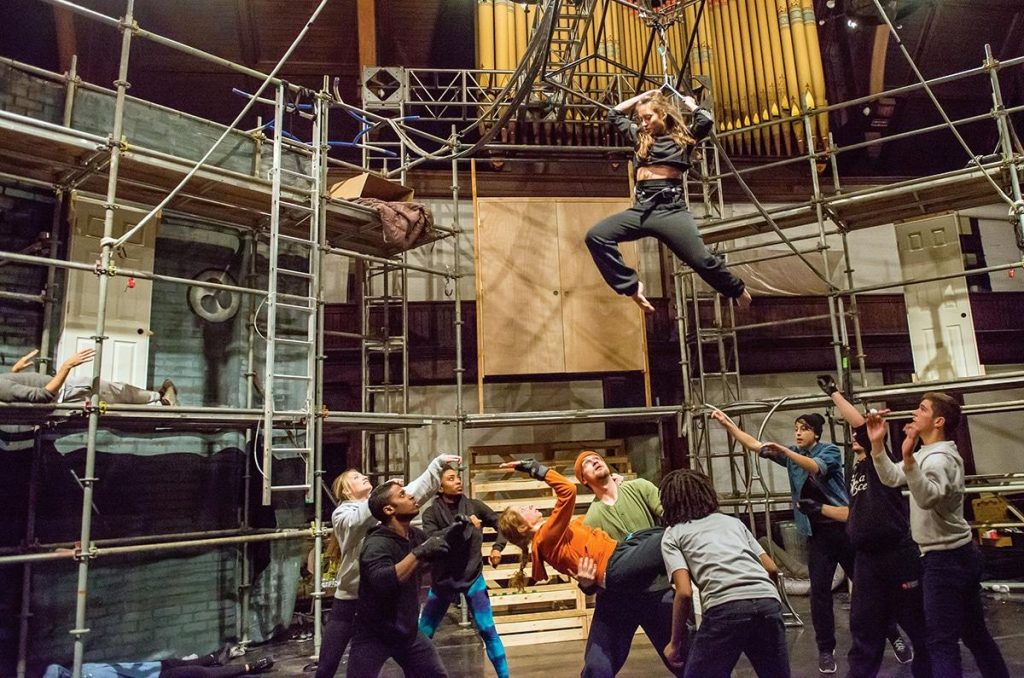As the sun sets on the winter solstice, leaving a cold, clear evening behind it, I stand outside on the porch in Fort Collins, Colorado.
It snowed a few days ago, and a thin layer of ice makes the wood slick and ensures I walk carefully as I light a circle of candles beneath the stars. Standing in their center, I wrap my shawl — purple, emblazoned with the zodiac symbols — more firmly around my shoulders and gaze up at the darkening sky.
Tonight is Yule, the longest night of the year. In pagan traditions around the northern hemisphere, witches, druids, and Wiccans celebrate the sun’s rebirth.
I’ve been celebrating Yule for most of my life. I was raised in an agnostic household, and discovered paganism when my mother mentioned that one of her friends was a witch, specifically a Wiccan. I was eleven at the time, and the idea that you could be a witch fascinated me. I plundered my local library for books on paganism, and through those books, I discovered a faith that appealed to my sense of wonder and my desire for something that venerated the feminine.
In paganism, I discovered a faith that appealed to my sense of wonder and my desire for something that venerated the feminine.
That winter, I celebrated Yule for the first time, lighting candles in my room and trying stay up until the sun rose the following day. I was unsuccessful in my all-night vigil (I’m a sleepy person), but Yule became one of my favorite sabbats. Also called Midwinter, it is one of eight holidays modern pagans celebrate. It always falls on the winter solstice (December 21), the point during the year when the sun is at its lowest point on the horizon. Where I live in Colorado, the sun usually sets around 4:30 p.m. on Yule, giving us nearly fifteen hours of darkness. While I no longer try to stay up through the long night, I watch the sunset and wake in time for the sunrise. I decorate my altar with evergreen boughs and red candles (set at some distance from the evergreen boughs, let me be precise), I bake something tasty to eat, and I take time to meditate on the death and rebirth of the sun.
Modern Yule draws from a vast number of traditions and celebrations.
There are older holidays to observe the solstice in Germany, Scandinavia, and the British Isles. Modern scholars often look to the ancient Roman celebration of Saturnalia as a source of influence. Saturnalia, which lasted from December 17 to December 25, was a feast for the god Saturn. This days-long festival was a carnival of delights, and the holiday became synonymous with alcohol and celebratory behavior. If you’ve ever read “The Hunchback of Notre Dame” (or seen the Disney movie), the Feast of Fools is also a descendant of this holiday.
In other parts of history, Yule was a time for turning inward. Much of the work of the year was complete. The harvest finished, provisions stockpiled to last through the winter, and the wind howled outside, bringing driving snow with it. Ghosts and other creatures wandered the long nights, many people believed, and it was best to stay inside, telling stories by the fire and waiting for the sun to rise.
Yule is a liminal period, a time for reflection and to await the sun’s return.
Today, Yule is still a liminal period, a time for reflection and to await the sun’s return. Large gatherings take place at critical solar sites around the world. For example, hundreds of pagan practitioners gather yearly at Stonehenge to watch the sun set behind the stones. At Newgrange in Ireland, a lucky few win an annual lottery to be inside the mound chamber to see the sun’s light suffuse the room through a narrow passage.
Unfortunately, I live nowhere near Stonehenge or Newgrange. Instead, I will sometimes make a Yule log, decorating the chosen piece with branches before burning it in our fire pit. While this tradition can be traced to many different folkloric practices, to modern pagans, it represents the death and rebirth of the Green Man. After the selected log is burnt, a small portion is saved to light the following year’s fire. The remaining ashes are then scattered over fields or gardens when it is time to plant seeds in the spring.
But my favorite thing to do is watch the stars on Midwinter night. During this time of year, the stars are brighter; almost half of the most luminous stars appear in the sky in wintertime. That’s not considering that the sky is already more transparent due to the decrease of moisture in the atmosphere. I love looking up on clear, moonless nights to see Orion, Taurus, and the Pleiades. Old stories are embedded in those stars, and Yule is the perfect time to tell them again.
So this year, on the winter solstice, I’ll wrap myself in my shawl and step outside as night falls, looking up to the stars and waiting for the sun to return.
Julia Pillard is a writer and pagan living in Colorado. She received her master’s in English literature from the University of Colorado at Boulder, where she studied the gothic literature of the eighteenth and nineteenth centuries. Julia also writes fiction as J.C. Pillard. Find her work at www.jcpillard.com




